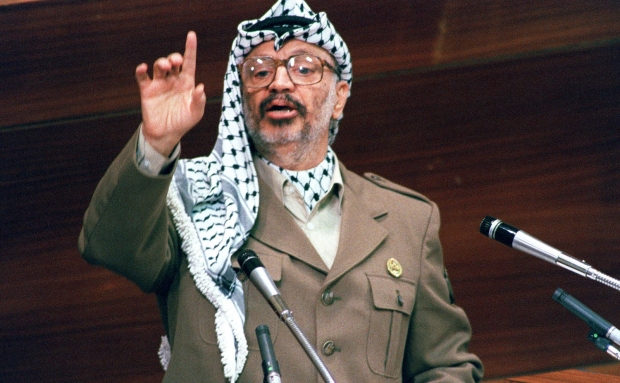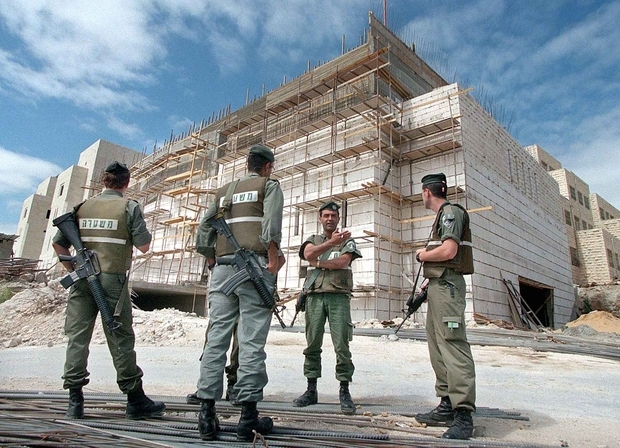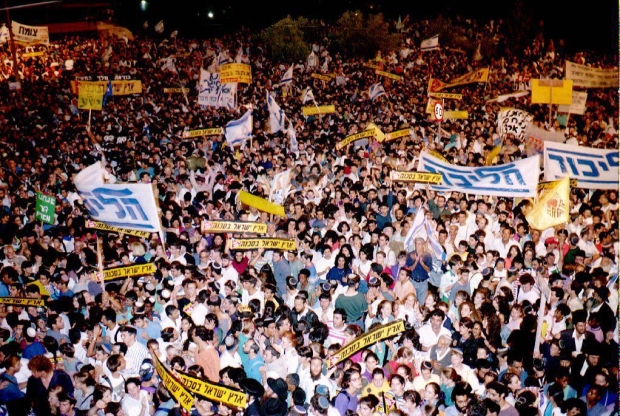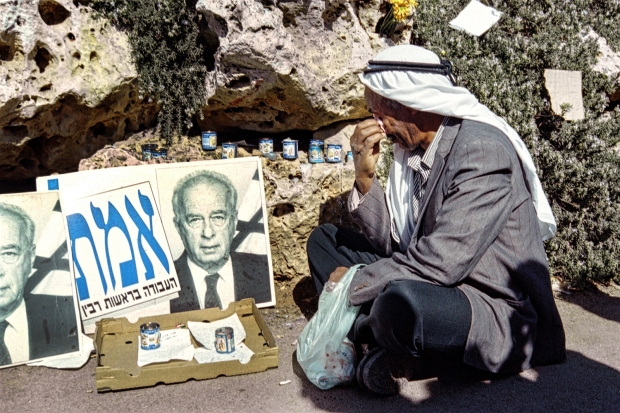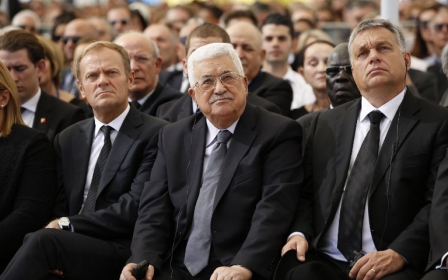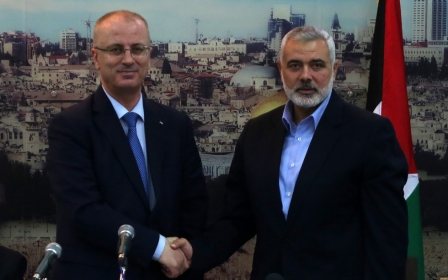Palestine, Israel and the Oslo Accords: What you need to know
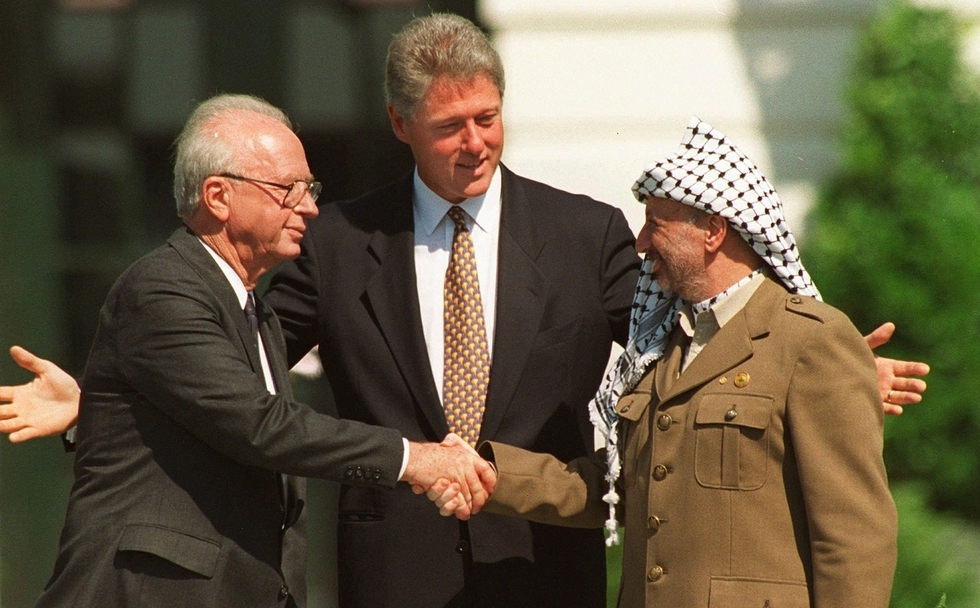
They were heralded with a historic handshake on the lawn of the White House. Three of their signatories went on to win the Nobel Peace Prize. They were, many hoped, a first step towards agreeing a settlement that would secure a lasting regional peace and an independent Palestinian state.
But the Oslo Accords, the first of which was signed between Israel and the Palestine Liberation Organisation (PLO) in Washington on 13 September 1993, are now remembered as a bid for peace that, while delivering some benefits, ultimately failed.
How did the accords come about?
During the late 1980s, the leaderships of both Israel and the PLO, the main group which represented the Palestinian people, felt besieged.
Israel was still paying the price for Operation Peace for Galilee, its disastrous invasion of Lebanon from 1982 until 1985, during which thousands of Lebanese and Palestinians, as well as hundreds of Israeli soldiers, were killed.
During that same war the PLO, led by its chairman Yasser Arafat, was driven out of Lebanon, where it had been for more than a decade, and into exile in Tunisia.
George Shultz, the US Secretary of State, was keen to build upon the peace process and end the violence of the intifada.
Washington had past form in this area: in 1978, then-President Jimmy Carter negotiated the Camp David Accords, which led to the 1979 Egypt–Israel Peace Treaty (and for which the signatories also won the Nobel Peace Prize).
But Shultz and the Americans had one condition: the PLO needed to reject violence and recognise Israel’s right to exist.
The US had one condition: the PLO needed to reject violence and recognise Israel’s right to exist. Yasser Arafat, who was faced with losing control over events in Palestine, wanted to talk
Arafat, who was faced with the prospect of losing control of events in Palestine, wanted to talk. His position was boosted in July 1988 when Jordan, which had previously laid claim to the West Bank, cut its administrative ties and recognised the PLO’s ambitions so it could focus on affairs within its own borders.
That left the PLO as the biggest representative of Palestinian interests in the region with which Israel was potentially ready to negotiate.
Speaking in Stockholm in December 1988, Arafat said that the PLO “accepted the existence of Israel'' and ''declared its rejection and condemnation of terrorism in all its forms".
The New York Times reported that Arafat's statement, "which he presented as a milestone, was immediately dismissed in Israel and greeted coldly by the United States". Shimon Peres, Israel's Foreign Minister, who would later play a key part in the Oslo negotiations, described the comments as a "cunning exercise in public relations".
But Arafat pressed on. Later that same month, after addressing the UN General Assembly in Geneva, the Palestinian leader officially recognised Israel and renounced the use of terrorism by the PLO.
Resolution 338, which called for lasting peace in the wake of the 1973 Arab-Israeli conflict, also received backing from the PLO.
When did Israel and Palestine start talking?
Israeli Prime Minister Yitzhak Shamir and Peres were already alarmed by the rise in popular support of Hamas and Islamic Jihad among young Palestinians. The PLO, they believed, would be the most effective intermediary.
The talks had one key flaw: the PLO was excluded
The Americans began talking to the PLO in Tunis, where the organisation was now based, in December 1988. That ultimately paved the way for the Madrid Conference in 1991, whose purpose was to pull together those with an interest in the unresolved Arab-Israeli conflict, which had oscillated between simmering tension and large-scale bloodshed in the decades since Israel had declared its independence in 1948.
But Madrid didn't go well. On paper it looked great: it was hosted by the US and the Soviet Union, the global superpowers since the end of the Second World War, whose own hostile relationship was in the process of being rapidly and radically recalibrated by the end of the Cold War and the looming collapse of the Soviet empire.
Israel, Jordan, Lebanon, Syria and a Palestinian delegation were all invited to the table.
The talks had one key flaw, though: the exclusion of the PLO, which had been punished by Washington for supporting Iraq during the 1990 invasion of Kuwait. Discussions between the Palestinians and Israel's Likud government were slow.
How did Israel and the PLO get the talks back on track?
In July 1992, Yitzhak Rabin of the Labor Party was elected Israeli Prime Minister. Frustrated at the pace of the Madrid talks, his representatives and the PLO began talking directly to each other in secret to avoid public scrutiny.
For support they turned to Norway, whose foreign ministers had met with Arafat during the 1980s and who had enjoyed a strong relationship with Israel since its founding in 1948.
Away from political pressures, Israeli and Palestinian negotiators proceeded to participate in talks from December 1992 to April 1993, under the auspices of an independent Norwegian social science research foundation called FAFO.The accords were finalised on 20 August 1993: Arafat gave his official backing on 9 September in a message to Rabin, acknowledging Israel's right to exist and his willingness to seek a peaceful resolution. Arafat received a letter from Rabin in return through the Norwegian foreign ministry.
On 13 September 1993, Arafat and Rabin signed the first Oslo Accord on the White House lawn.
What was in the first Oslo Accord?
The first accord was intended to create a timetable for the Palestinian-Israeli peace process. Its key points included:
- The Israeli military to pull out from parts of Gaza and the West Bank
- The establishment of a Palestinian interim government, the Palestinian National Authority, to administer areas it controlled
- Conditions for Palestinian elections
- Israeli-Palestinian cooperation across energy, resources, trade, finance, communication and social welfare, among other areas
- The G7 countries to initiate an economic development plan
For the first time, the Palestinian leadership officially recognised Israel’s right to exist. In return, Israel recognised the PLO as the legitimate representative of the Palestinian people.
What was left out of the first accord?
Oslo was intended to be the starting point. It was hoped the accord would foster trust on both sides and that this trust would lead to the striking of a two-state agreement.
The plan was for the agreement to last for five years, during which there would be discussions on the most contentious issues, including Palestinian refugees' right of return, the construction of Jewish settlements, the status of Jerusalem, and border security.
The first accord did not make any official commitment to an independent Palestinian state, although it did establish preliminary steps for the creation of one. Arafat was allowed to return to Gaza to lead the PA, which he eventually did in July 1994.
What was the reaction to the first accord?
At the signing ceremony in Washington, US President Bill Clinton welcomed the agreements as “the dawn of a new era”, while Rabin declared it an “opportunity for peace”.
But the agreements angered many Palestinians and Israelis.
Right-wing Israelis were opposed to making a deal with the PLO, which they regarded as a terrorist organisation. They feared too, that Israelis would lose their claim to land they regarded as a Biblical right.
Palestinian reactions were also mixed. Although the accord was supported by Fatah - the largest faction of the PLO - Hamas, Islamic Jihad and the Popular Front for the Liberation of Palestine (PFLP) refused to recognise Israel, and believed the agreements would betray the right of Palestinian refugees to return to their lands inside Israel.
In response to the agreements, Edward Said, a prominent Palestinian intellectual, wrote that “Israel remains in occupation of the West Bank and Gaza. The primary consideration in the document is for Israel’s security, with none for the Palestinians’ security from Israel’s incursions".
How did the second accord come about?
Talks continued between Israeli and Palestinian negotiators. Gradually they arrived at a series of related interim agreements:
- The Cairo Agreement (4 May 1994)
- The Agreement on Preparatory Transfer of Powers and Responsibilities Between Israel and the PLO ( 29 August 1994)
- Protocol on Further Transfer of Powers and Responsibilities (27 August 1995)
These were then wrapped into the second Oslo Accord, which was actually signed in Taba, Egypt, on 24 September 1995. The plan was that it would build upon the first and bring both sides even closer to negotiating a permanent settlement.
Aside from reaffirming the commitments made in 1993, it also broadened the idea of Palestinian self-government in the West Bank, including elections, and committed the Israeli army to withdrawing from major Palestinian towns, which were turned over to Palestinian control.Most significantly, it divided the West Bank into areas that would be subject to economic and security cooperation between Israel and the Palestinian Authority:
- Area A: Under PA control (mostly pockets of land centering on major Palestinian cities)
- Area B: Under joint Israeli-Palestinian control
- Area C: Under Israeli control (primarily in the east of the West Bank, near the border with Jordan)
Together, areas B and C represented 80 percent of the West Bank. The long-term intention was that these areas would be gradually transferred to the Palestinian Authorities - but they continue to remain under some level of Israeli control to this day.
What happened in the aftermath of the accords?
The new arrangements created a fresh set of circumstances for both the Israelis and the Palestinians.
But the deal became bogged down, as each side accused the other of failing to implement key aspects of the agreements.
In February 1994, a massacre of 29 worshippers at the Ibrahimi Mosque - also known as the Cave of the Patriarchs - in Hebron, carried out by an Israeli settler, fuelled Palestinian anger.
Shimon Peres became prime minister but then lost a subsequent election in June 1996 to Benjamin Netanyahu, Israel’s current prime minister and an outspoken critic of the accords.
Further attempts to resume the process, including the Wye River Memorandum in 1998 and the Camp David Summit in 2000, ended without finalising a binding agreement.
The Second Intifada erupted in September 2000, and resulted in the deaths of more than 3,000 Palestinians and almost 1,000 Israelis over a span of four-and-a-half years.
By the end of 2001, in a reversal of the Oslo process, the Israeli military had temporarily reoccupied many of the areas transferred to the PA, under the auspices of Prime Minister Ariel Sharon, another right-wing critic of the accords.
The Roadmap for Peace, a fresh attempt to restart the process, was attempted in 2003, but also faltered amid further violence.
What's happening with the Middle East peace process now?
Jared Kushner, US President Donald Trump’s advisor and son-in-law, embarked on a Middle East tour in June to secure support from regional leaders for reviving the peace process. Dubbed “the Deal of the Century”, the details of Trump’s much-delayed plan have yet to be announced.
But the current administration's policies have only heightened Palestinian concerns about a perceived bias in US policy towards Israel.
Since Trump assumed office in 2017, the US has recognised Jerusalem as the capital of Israel, given thinly veiled support for more settlements, opposed criticism of Israel at the UN and other international bodies, and also cut US support to Palestinian refugees and closed the PLO's offices in Washington.
Mahmoud Abbas, the president of the PA, has refused to enter negotiations with Trump’s peace team, saying: "It is a dishonest and biased mediator."
On the Palestinian side, any attempt at peace is also hampered by the split between Hamas and Fatah. Hamas, which controls Gaza, has bypassed the PA to discuss an agreement with Israel brokered by Egypt, despite Abbas's objections.
The Hamas-Israel deal, which has yet to be officially confirmed, would reportedly establish a year-long ceasefire and provisions to ease the Gaza blockade in exchange for a halt of attacks from the coastal enclave.
Why did Oslo not achieve what it set out to do?
The accords were intended only as as a precursor to a final settlement, postponing further negotiations to rebuild trust between Israel and Palestine and increase the chances of both sides coming together for the first time.
Some of the accords' legacy still remain in place, including the existence of the Palestinian Authority as the largest internationally recognised Palestinian body and the division of the West Bank into three zones.
But the accords' ultimate aims were thwarted.
Nathan Thrall, project director at the Middle East Program of the International Crisis Group, told Middle East Eye that Oslo had no built-in incentives for Israel to end the interim period of limited Palestinian autonomy.
“Israel was granted indefinite control of all the land without having to give equal rights to all its residents,” he said.
That left Israel, Thrall added, able to delay having to make one of two choices: a full partition; or equal rights for Palestinians.
Nadia Hijab, an analyst and board president of the Washington-based Palestinian Policy Network, also known as Al Shabaka, said: “The Oslo Accords tied the Palestinians up in a never-ending process of committees and bureaucracy.”
The Oslo Accords tied the Palestinians up in a never-ending process of committees and bureaucracy
- Nadia Hijab, Palestinian Policy Network
The result, she said, was a “disastrous trap” for the Palestinians. “The Israelis from the start – including Yitzhak Rabin - made clear that a sovereign Palestinian state was not on the cards.”
“The Palestinians are now at one of the weakest points in their history and the Israelis are even more determined to colonise the whole of Palestine than ever.”
“Palestinians have no choice but to rebuild their sources of power, both within Palestine and in exile, in order to achieve their rights in whatever political outcome, one state or two.”
Johan Jorgen Holst, Norway's minister of foreign affairs and a lynchpin of the negotiations, had a stroke and died in January 1994. He had worked himself to death with the peace process, his wife later said.
The key players in Oslo, including the three who went on to win the Nobel peace prize - Rabin, Peres and Arafat - never saw the peace they wanted.
Ahmad Nafi contributed reporting to this article.
This article is available in French on Middle East Eye French edition.
New MEE newsletter: Jerusalem Dispatch
Sign up to get the latest insights and analysis on Israel-Palestine, alongside Turkey Unpacked and other MEE newsletters
Middle East Eye delivers independent and unrivalled coverage and analysis of the Middle East, North Africa and beyond. To learn more about republishing this content and the associated fees, please fill out this form. More about MEE can be found here.



